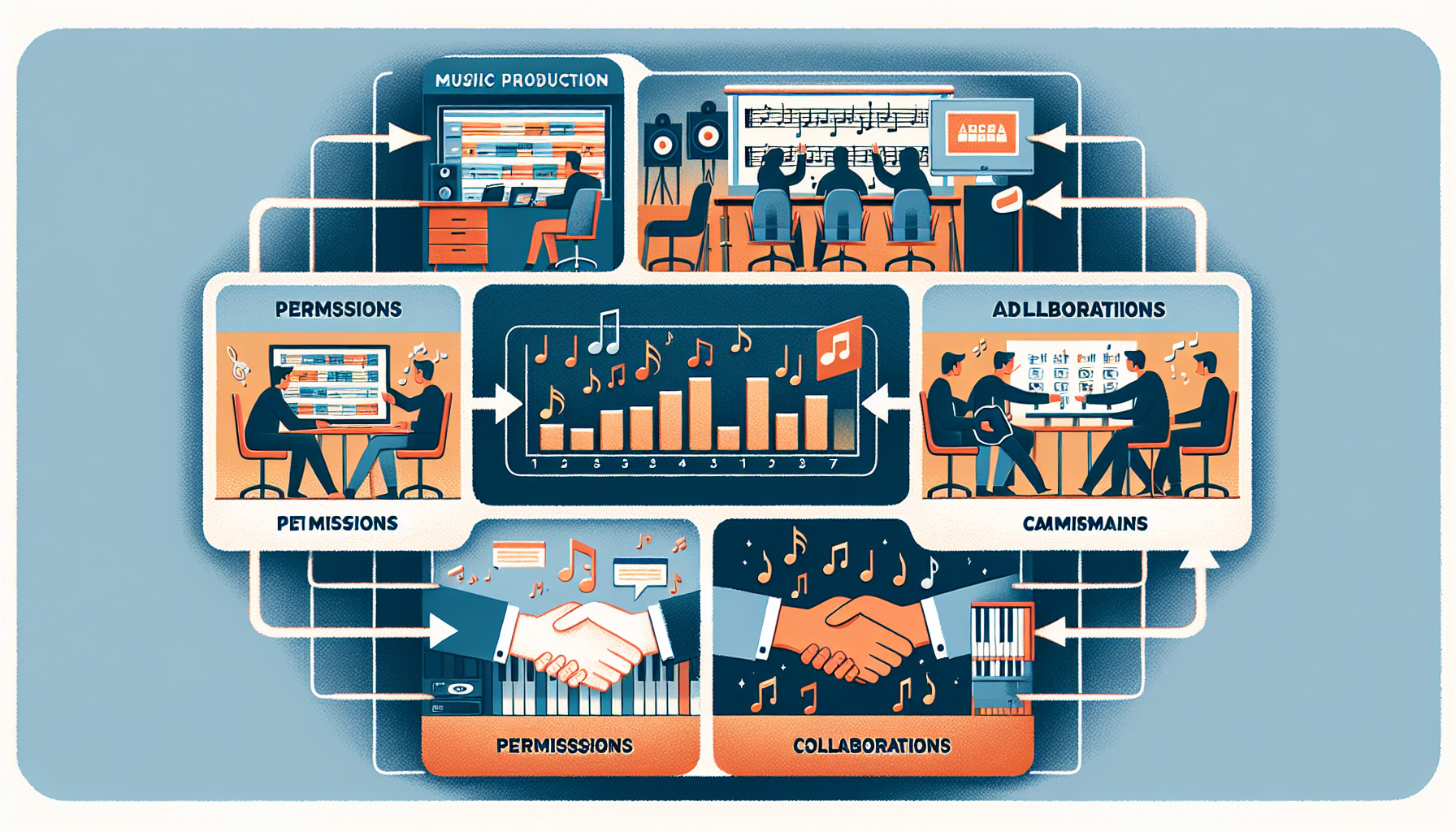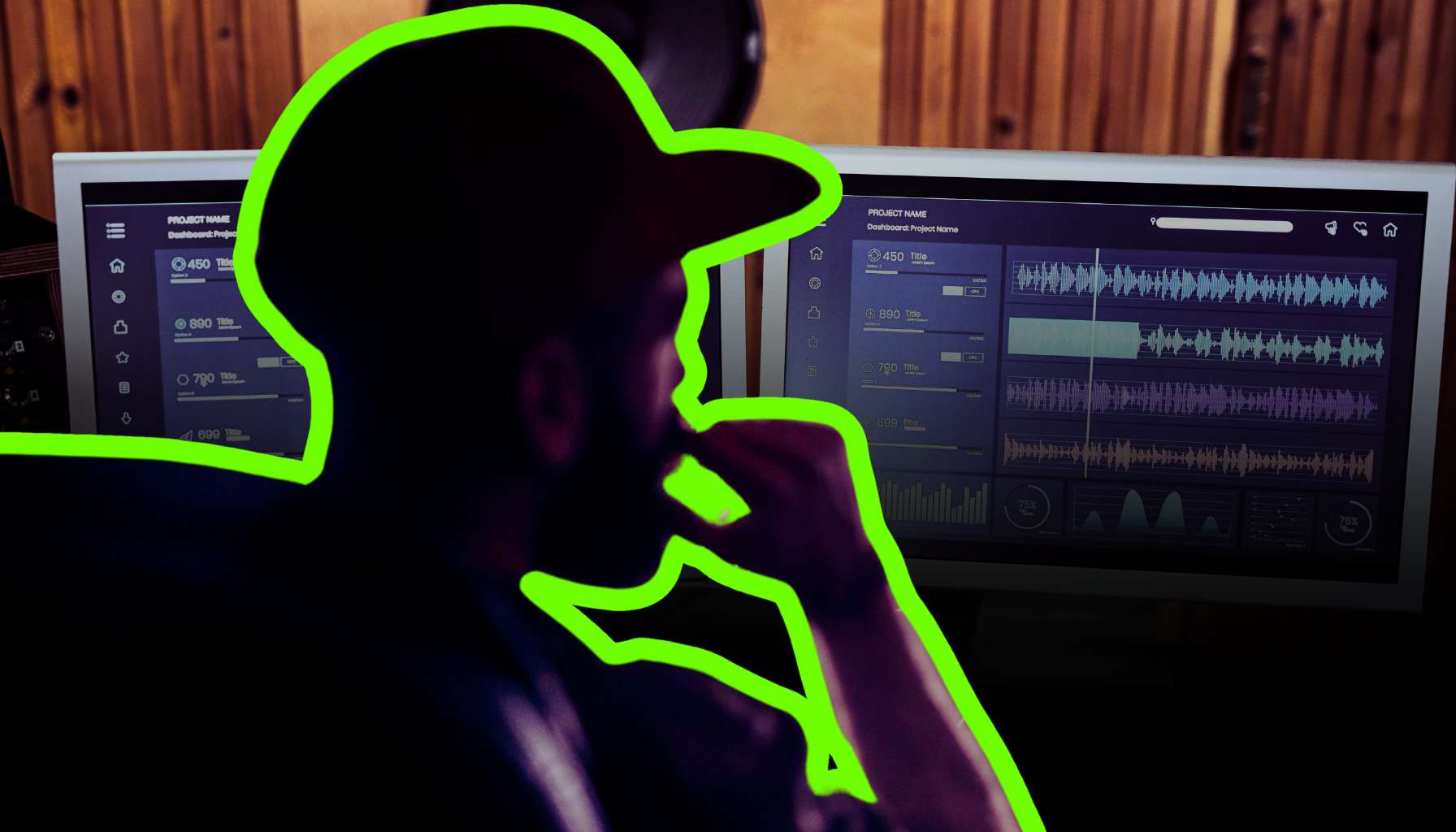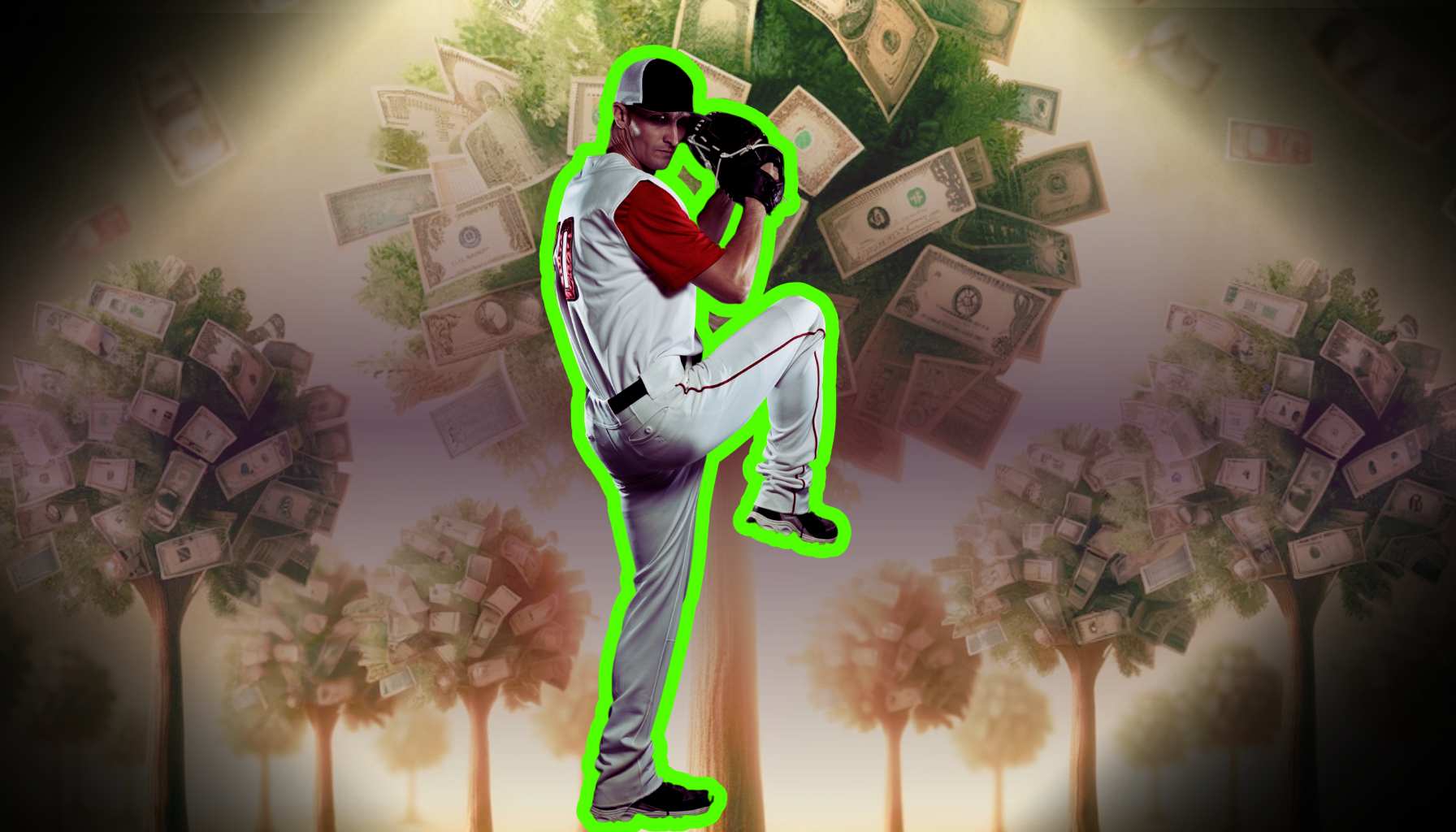Understanding Music Notes: The Essence of Music
What is a Musical Note?
When we listen to our favorite songs, we’re immersed in a world of sounds that speak to our hearts and minds. But what are these sounds, exactly? These are what we call musical notes. Simply put, a musical note is the smallest standalone element of sound in music. Each note has a distinct pitch, volume, and duration, contributing to the melody, rhythm, and harmony of a piece. However, there is much more to notes than meets the eye – or rather, the ear.
Understanding Pitch and the Musical Scale
To understand musical notes, we must first understand the concept of pitch. Pitch refers to the perceived frequency of a note. In simpler terms, it’s the ‘highness’ or ‘lowness’ of a sound. The higher the frequency, the higher the pitch, and vice versa.
The musical scale is a series of notes ordered by ascending or descending pitch. In Western music, the most common scale is the diatonic scale, which includes seven notes: do, re, mi, fa, so, la, and ti. These notes are represented by the first seven letters of the alphabet: A, B, C, D, E, F, and G.
For example, the C major scale, one of the most basic scales in music, consists of the notes C, D, E, F, G, A, and B. It’s important to understand that each scale provides a unique soundscape, leading to different emotional responses. (Needs example or image)
Exploring Natural Notes and Their Importance
Natural notes, also known as “white keys” on the piano, form the essence of Western music. They are the seven notes of the diatonic scale that we mentioned earlier (A, B, C, D, E, F, G). These notes are vital for musicians of all levels because they provide the foundation upon which music theory is built.
Think of the natural notes as the basic vocabulary of music. Just as we use words to form sentences, we use natural notes to form melodies and harmonies. And just as mastering the basics of a language allows us to understand and create more complex sentences, mastering natural notes allows us to understand and create more complex musical compositions.
Differentiating Quarter Notes and Half Notes
Now that we have a better understanding of the building blocks of music, let’s dive into the rhythmic aspects, specifically quarter notes and half notes.
A quarter note, depicted as a filled-in note head with a stem, is often the beat’s standard unit in music. If we think of music as a clock, with each measure being one minute, the quarter notes would be the “seconds,” ticking away steadily.
On the other hand, a half note, which is an empty note head with a stem, lasts twice as long as a quarter note. In our clock analogy, if a quarter note is a second, then a half note would equate to two seconds. Understanding these note values is crucial for reading and interpreting sheet music, and ultimately for creating beautiful rhythms.
In summary, musical notes are the heart of any piece of music. They create pitch and rhythm, forming the melodies and harmonies that stir our emotions. By understanding the basics, such as pitch, the musical scale, natural notes, and the differences between quarter and half notes, we can appreciate music on a deeper level. For further reading on musical notes and their importance in creating music, this article provides a more detailed exploration. Stay tuned for the next section where we’ll delve into the world of musical notation.
What Are Music Notes?
of sound, encapsulating the composer’s intentions and conveying a wealth of musical information. They ar
Music notes are not just simple symbols; they are the carrierse the building blocks of all music, representing specific pitches and rhythms that guide the musician in creating a unique sonic landscape. These notes, recorded on a piece of sheet music, are akin to a universal language understood by musicians worldwide, allowing a symphony composed in Vienna to be accurately performed in Tokyo, New York, or Sydney.
The Essence of Musical Notation
Musical notation is a system used to visually represent music through the use of written symbols. It serves as a guide, providing the necessary instructions for a musician to reproduce the intended sound accurately. This includes pitch (which note to play), duration (how long to play the note), volume (how loud to play the note), and tempo (the speed at which to play the music).
(Needs example or image)
The system of musical notation we use today has been shaped by centuries of tradition and evolution. Originating in ancient civilizations, it has transformed over the years to accommodate the evolving needs of composers and musicians. Today, it enables complex compositions to be written down, shared, and performed consistently by different musicians across different times and places.
Naming Music Notes
In the Western world, music notes are named after the first seven letters of the alphabet: A, B, C, D, E, F, and G. These names are used to denote different pitches in music. The sequence of letters repeats as the pitch gets higher or lower. For instance, after the note G, the next note is A but an octave higher.
The names assigned to notes are not random but instead correspond to their pitch. For example, the “A” note refers to a specific pitch – in the case of the ‘A’ above middle ‘C’ on a piano, it is usually tuned to 440 Hz, a standard reference frequency used in music. Understanding the naming convention of notes helps musicians read sheet music, and it’s a fundamental part of music education.
Unusual Notes: From Melodic Music to Car Horns
While we mostly encounter music notes in the context of melodious pieces from pianos, violins, or singers, they aren’t limited to traditional musical instruments. In fact, anything that produces sound, including everyday objects like car horns, doorbells, or alarm clocks, creates notes. Even the cacophony of city traffic or the rhythmic tapping of rain on a window can be broken down into distinct pitches, or notes.
This broad application of music notes reflects the ubiquitous nature of music in our lives. By training our ears to recognize different notes, we can appreciate the symphony of sounds that surround us every day, even in the most unexpected places. For an in-depth exploration of the surprising places where we can find music, consider reading this enlightening article.
Understanding what music notes are, the system of musical notation, the naming of notes, and the existence of unusual notes forms the basis of our music education. With this knowledge, we can truly begin to appreciate the depth and diversity of the music that surrounds us. Stay with us as we continue this exciting exploration of music in the next section.
Vibrations in Harmony: What is a Note Frequency?
Grasping the Concept of the Four Notes in Music Theory
Before we can understand note frequency, we need to grasp a fundamental concept in music theory – the four notes. The term “four notes” commonly refers to the semitones or half-steps that exist between the whole steps in a scale. For instance, in the key of C Major, these notes are C#, D#, F#, and G# or, alternatively, Db, Eb, Gb, and Ab. These notes, sometimes referred to as black keys on a piano, play a crucial role in determining the tonality and harmonic progression within a piece of music.
The Role of Note Frequency in Musical Instruments
The note frequency, measured in Hertz (Hz), is essentially the speed at which a sound wave vibrates. It is this frequency that determines the pitch of the note – higher frequencies result in higher-pitched notes and vice versa.
Every musical instrument, whether it’s a piano, guitar, violin, or flute, is designed to produce sounds of different frequencies. For instance, when you strike a key on a piano or pluck a string on a guitar, the instrument vibrates at a certain frequency, creating a sound with a particular pitch. The range of frequencies an instrument can produce determines its pitch range.
Understanding Half Steps within a Musical Scale
In the context of music theory, a half step (or semitone) is the smallest interval commonly used in Western music. On a piano, it’s the distance from one key to the very next, whether black or white. For example, the distance from C to C# (or Db) is a half step.
The concept of half steps is particularly important when discussing note frequency. This is because, in Western music, the frequency ratio of a half step is the twelfth root of two (approximately 1.0595). So, to find the frequency of a note a half step higher than a given note, you would multiply the frequency of the given note by this ratio.
Understanding note frequency is a fascinating way to appreciate music from a more scientific perspective. It not only deepens our comprehension of how instruments create different pitches but also reveals the beautiful mathematical relationships that underlie the art of music. For further reading on note frequencies and their significance in music theory, check out this comprehensive resource.
In the next section, we will take a closer look at note values and how they contribute to the rhythm of a musical piece. Keep reading to stay in tune with the rhythm!
Taking the Measure: What is a Note Value?
What is a Whole Note and How is it Used?
In the realm of musical notation, note values dictate the duration of a sound, or more specifically, the length of time that a particular note should be held by the performer. The whole note, represented by a hollow oval note head, is one of the most common note values and serves as the baseline for determining the value of other notes.
A whole note, as the name implies, generally occupies the entirety of a measure in a piece of music with a 4/4 time signature, the most common time signature in Western music. This means that in such a piece, a whole note is held for four beats. It’s worth noting that the actual duration of a whole note depends on the tempo of the piece—faster tempos yield shorter beats, and thus a shorter whole note.
Interpreting the Line of the Staff in Modern Music
The position of a note on the staff – the set of five horizontal lines on which music is written – indicates its pitch. Higher positions correlate with higher pitches and vice versa. The specific line or space a note head is placed on determines its pitch name (A, B, C, D, E, F, G in a basic major or minor scale).
In modern music, we often see additional symbols, such as sharps and flats, used in conjunction with the notes. These alter the pitch of the note slightly. For example, a sharp raises the note by a half step, while a flat lowers it by the same amount.
(Needs Example or Image)
The Difference Between Early Music Notation and Today
Early music notation, often seen in medieval and Renaissance music, varies significantly from the notation we use today. For instance, the note shapes in early music notation – such as squares and diamonds – bear little resemblance to the oval note heads we use now.
Moreover, early music notation was less precise in indicating rhythm and pitch. Many early notations didn’t show any form of meter (regular rhythmic pulses), which is a fundamental element of modern music notation.
In contemporary notation, we have specific symbols not just for pitch and note value, but also for tempo, dynamics, articulation, and other expressive elements. This evolution reflects the increased complexity and expressivity of Western music over the centuries.
For a deeper dive into the history and development of music notation, this article provides an informative overview. In the next section, we’ll turn our focus to the different notation systems used in music. Stay tuned!
Symbolic Language: What Are the Notation Systems?
Exploring Different Music Notation Systems
While the western standard notation, also known as staff notation, is the most prevalent system globally, music is a universal language with diverse expressions and thus, a multitude of notation systems. Each culture often develops its unique way of documenting music, leading to the advent of several notation systems.
For instance, the tablature system, or simply ‘tabs’, is prevalent in stringed instruments like guitars and ukuleles. It simplifies the learning process by showing the player where to place their fingers on the instrument, using numbers on lines that represent the instrument’s strings.
On the other end of the spectrum is the neumatic notation used in early Gregorian chants. This system utilizes symbols above the text to indicate the general shape and direction of the melody but not the exact pitches or rhythms. It was more of a memory aid for singers who already knew the melodies.
There’s also the Indian sargam, the Japanese koto notation, the Javanese kepatihan notation, and many more. Each of these systems serves the specific needs of its musical tradition, contributing to the rich tapestry of global music.
Understanding Musical Pitch and Its Role in Notation
Musical pitch refers to the perceived frequency of a note, which can be low, high, or anywhere in between. In other words, pitch is what allows us to differentiate a soprano’s high C from the low rumble of a bass guitar.
In notation systems, pitches are often assigned to specific symbols or positions. In staff notation, as mentioned earlier, vertical position determines pitch. A note placed higher on the staff represents a higher pitch, and vice versa. The note names (A, B, C, D, E, F, G) are assigned to specific lines and spaces, which aids in identifying the pitch.
In some notation systems, such as the tablature, pitch is indicated by the line (string) and the number (fret). In others, like the neumatic notation, exact pitch isn’t specified at all, but only the relative direction (up or down) of the melody.
Understanding musical pitch is crucial for performers, as it informs them which note to play on their instrument. It’s also important for composers and arrangers, as the interplay of different pitches is what creates harmony and melody in music.
If you’re interested in learning more about musical pitch and how it works, this article delves deeper into its fascinating intricacies.
What Are the Other Types of Music Notes?
A Deep Dive into Musical Notation and Reading Notes
Beyond the basic seven natural notes in music – A, B, C, D, E, F, G – there exists a variety of other types of notes. Understanding these different note types broadens our comprehension of music, from reading sheet music to composing and performing.
A ‘sharp’ (#) raises a note by a half-step, and a ‘flat’ (♭) lowers it by the same interval. There are also ‘double sharps’ (x) and ‘double flats’ (♭♭), which raise or lower a note by two half-steps, respectively. These alterations are crucial for playing in different keys and expressing more complex musical ideas.
Then, there are the ‘natural’ (♮) symbols, which cancel out any previous sharps or flats applied to the same note in a piece of music. This symbol is commonly used in instances of modulation or key changes within a composition.
Dotted notes are another variety that increase the duration of the original note by half. For example, a dotted quarter note would last for the duration of a quarter note plus an eighth note.
And finally, there are grace notes, acciaccaturas, and appoggiaturas – tiny notes with a slash through them, often appearing before a main note. These are ornamental and meant to be played quickly, adding flourish to the music.
To visualize these different types of notes and their respective roles in sheet music, one can look at various examples of sheet music that utilize these symbols (needs example or image).
What Are Some Musical Note Examples?
From Whole Notes to Sixteenth Notes: A Closer Look
The notes we see on a piece of sheet music are not random symbols; each has a specific duration and thus, contributes to the rhythm of the piece. By understanding these note values, you can interpret the tempo and feel of a piece of music accurately.
Starting with the whole note, or semibreve, which is represented by an open oval without a stem. This is the note with the longest duration in modern music notation and typically represents four beats in a 4/4 time signature.
Next, there’s the half note or minim, signified by an open oval with a stem. As the name suggests, it’s worth half the duration of a whole note, i.e., two beats in a 4/4 time signature.
Following this, we have the quarter note or crotchet, indicated by a filled-in oval with a stem. It’s worth one beat in a 4/4 time signature.
Eighth notes, or quavers, are worth half a beat in a 4/4 time signature and are represented by a filled-in oval with a stem and one flag. For notes shorter than this, each additional flag halves the note’s duration: sixteenth notes (semiquavers) have two flags, thirty-second notes (demisemiquavers) have three, and so on.
These notes form the backbone of most rhythms in Western music. By combining them in different ways, musicians can express a virtually infinite variety of rhythmic ideas.
What Does Every Music Note Mean?
Deciphering Note Symbols: Quarter Notes, Eighth Notes, and Sixteenth Notes
As mentioned earlier, each music note has a specific duration that determines its role within the rhythm of a piece. Let’s take a closer look at quarter notes, eighth notes, and sixteenth notes, which are commonly found in music.
A quarter note, represented by a filled oval with a stem, is typically one beat in a 4/4 time signature. It forms the basic unit of beat in most Western music, and you’ll find it in virtually every style, from classical symphonies to modern pop songs.
Eighth notes, worth half a beat in a 4/4 time, are represented by a filled-in oval with a stem and one flag. You can also see them beamed together in groups, which makes the music easier to read. Eighth notes can create more complex rhythms and syncopations, adding intrigue and nuance to the music.
Sixteenth notes, worth a quarter of a beat in a 4/4 time, are depicted with two flags or beams. Like eighth notes, they can be beamed together for easier reading. Sixteenth notes are used for very fast rhythms and intricate, detailed musical passages.
By understanding what these notes signify, musicians can accurately interpret the rhythmic language of a piece. This comprehension allows musicians to bring sheet music to life, transforming ink on a page into a vibrant auditory experience.
For more detailed information about musical notation and reading notes, check out this comprehensive guide on understanding and interpreting musical symbols.
Music’s Universal Language: What are Music Symbols?
An Introduction to Reading Sheet Music
Music symbols form the written language of music, providing a medium for composers to express their ideas and musicians to interpret them. Just like any language, it has an alphabet, grammar, and syntax that one must comprehend to communicate effectively.
The most basic symbols in music notation are the staff, the clefs, and the notes. The staff is a set of five parallel lines on which notes are written. The position of the note on the staff indicates its pitch.
Clefs, which come at the beginning of the staff, dictate the pitch range of the notes on the staff. The two most common clefs are the treble clef (used for higher pitches) and the bass clef (used for lower pitches).
The notes themselves represent sounds of different pitches and lengths. Each note is represented by a note head, a black or white oval, positioned on the staff. The higher a note head sits on the staff, the higher the pitch it represents.
Various other symbols also exist in sheet music, such as sharps, flats, and naturals, which alter the pitch of notes, and dynamics and articulation marks, which guide the performance of the notes. Understanding these symbols is the first step in learning to read sheet music.
How Do You Read Notes?
Understanding Treble Clef, Bass Clef, and the Musical Staff
Reading music notes starts with understanding the staff and the clefs. The staff is the foundation, and the clefs specify the pitches of the notes on the staff.
In the treble clef, also known as the G clef, the swirl encircles the second line from the bottom of the staff, designating that line as G above middle C. Notes placed on this line are therefore G, and the rest of the notes on the staff fall into place above and below this note.
The bass clef, or F clef, has two dots above and below the second line from the top of the staff. This line represents F below middle C. Notes are then placed relative to this F note.
Notes can appear either on the lines or in the spaces between the lines, with each line and space representing a different pitch. The vertical position of a note head on the staff indicates the note’s pitch. Higher positions correspond to higher pitches and vice versa.
The System of Note Names: From Line and Space to Musical Pitch
In the treble clef, the notes on the lines, from bottom to top, are E, G, B, D, and F. A popular mnemonic to remember this is “Every Good Boy Does Fine”. The notes in the spaces spell out the word “FACE”, starting from the bottom.
In the bass clef, the notes on the lines, from bottom to top, are G, B, D, F, A (“Good Boys Do Fine Always”), and the notes in the spaces are A, C, E, G (“All Cows Eat Grass”).
This naming system forms the basis for reading sheet music and can be understood as the first step in translating the visual symbols of written music into the auditory realm of musical pitch.
How Are Music Notes Defined?
Understanding Note Heads and the Pitch of the Note
In written music, the pitch of a note is primarily determined by its vertical position on the staff, as discussed earlier. However, the specific design of the note head also holds significance.
A note head can be open (white) or filled (black). An open note head typically represents a whole note, the longest note value in modern music notation, while a filled note head represents a note of shorter duration, like a half note or a quarter
note.
There’s also the distinction between round note heads and square or diamond-shaped ones, typically seen in some types of contemporary or experimental music notation. While round note heads denote standard pitches, square or diamond shapes often suggest specific playing techniques or non-standard pitches.
The Role of Key Signature in Reading Sheet Music
Another crucial aspect of understanding musical notes is the key signature. Positioned right after the clef at the beginning of a piece, the key signature is a set of sharp (#) or flat (♭) symbols. It indicates the key of the piece, essentially telling you which notes to play sharp or flat consistently throughout the piece.
For instance, if the key signature has an F#, every F in the piece should be played as F# unless otherwise indicated by a natural symbol (♮), which cancels the effect of the key signature for that note.
Mastering the key signatures is an essential part of fluent note reading, as it affects the pitch of the notes and consequently, the tonality and mood of the entire piece.
Are You Ready to Practice Your Note Reading With Me?
Now that you’ve gained a fundamental understanding of music symbols, note reading, and the role of key signatures, it’s time to put this knowledge into practice. Remember, like any language, fluency in music reading requires consistent practice. But don’t worry, the journey of learning to read music can be incredibly rewarding, and with each step, you’re becoming a more skilled musician.
Stay curious, and keep exploring the universal language of music!













